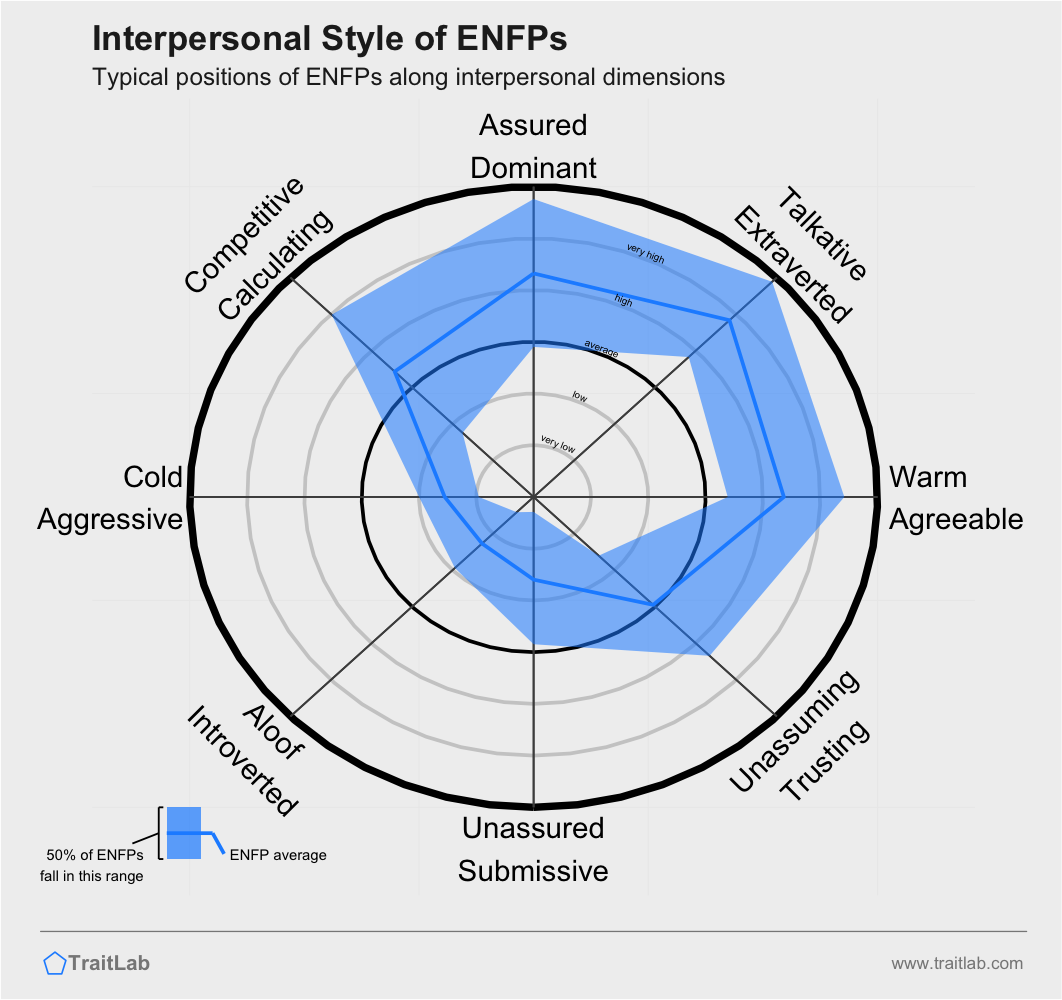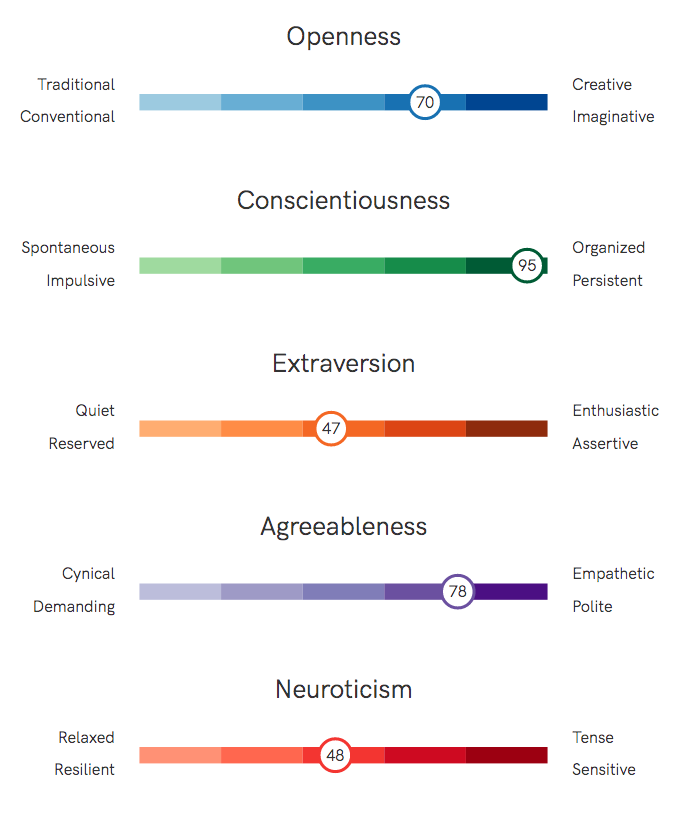Most ENFPs share a common interpersonal style and set of challenges.
Reading time: 5 minutes

Gregory Park, Ph.D.
Author
Most ENFPs share a similar interpersonal style, and this style impacts most of their relationships, including those with friends, families, work colleagues, and romantic partners.
For comparisons between ENFPs and other types, jump straight to these personality type comparisons.
Your interpersonal style describes your social tendencies in terms of dominance, submissiveness, warmth, and coldness. This style impacts how you interact with others, and in turn, it can affect how they act around you.
The circular graph below shows the average interpersonal style of ENFPs. The vertical, up-down axis shows their style in terms of dominance, with a highly assertive style at the top (Assured-Dominant) and a highly passive style at the bottom (Unassured-Submissive).
The horizontal, left-right axis shows their style in terms of warmth, with a cold and impersonal style on the left (Cold-Aggressive) and a friendly, empathetic manner on the right (Warm-Agreeable).

The shaded blue area shows the average interpersonal style of ENFPs across eight dimensions. Notice the areas where the blue area extends closer to the outer edges of the circle. These are the aspects that most heavily influence ENFPs’ interactions.
ENFPs’ combination of high agreeableness and extraversion often results in high interpersonal warmth, social enthusiasm, and assertiveness. ENFPs tend to value close relationships with other people, and they excel at developing new relationships while maintaining existing ones.

Ready to see yourself clearly?
See an incredibly detailed analysis of your unique traits, strengths, and interests
To summarize the graph above, three aspects most heavily influence ENFPs’ interpersonal style:
For comparisons between ENFPs and other types from the 16 Personality typology, visit any of the type pairings below: